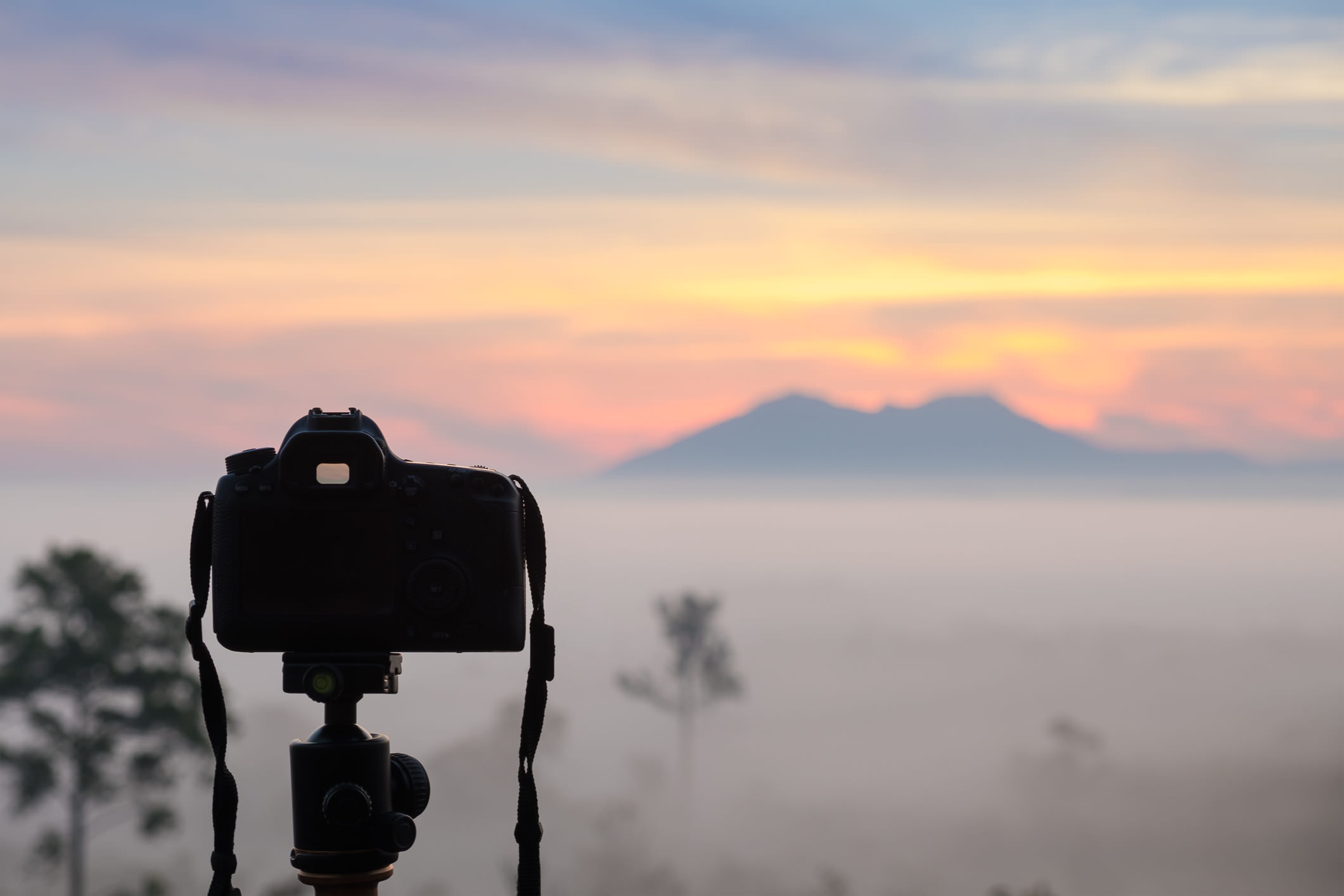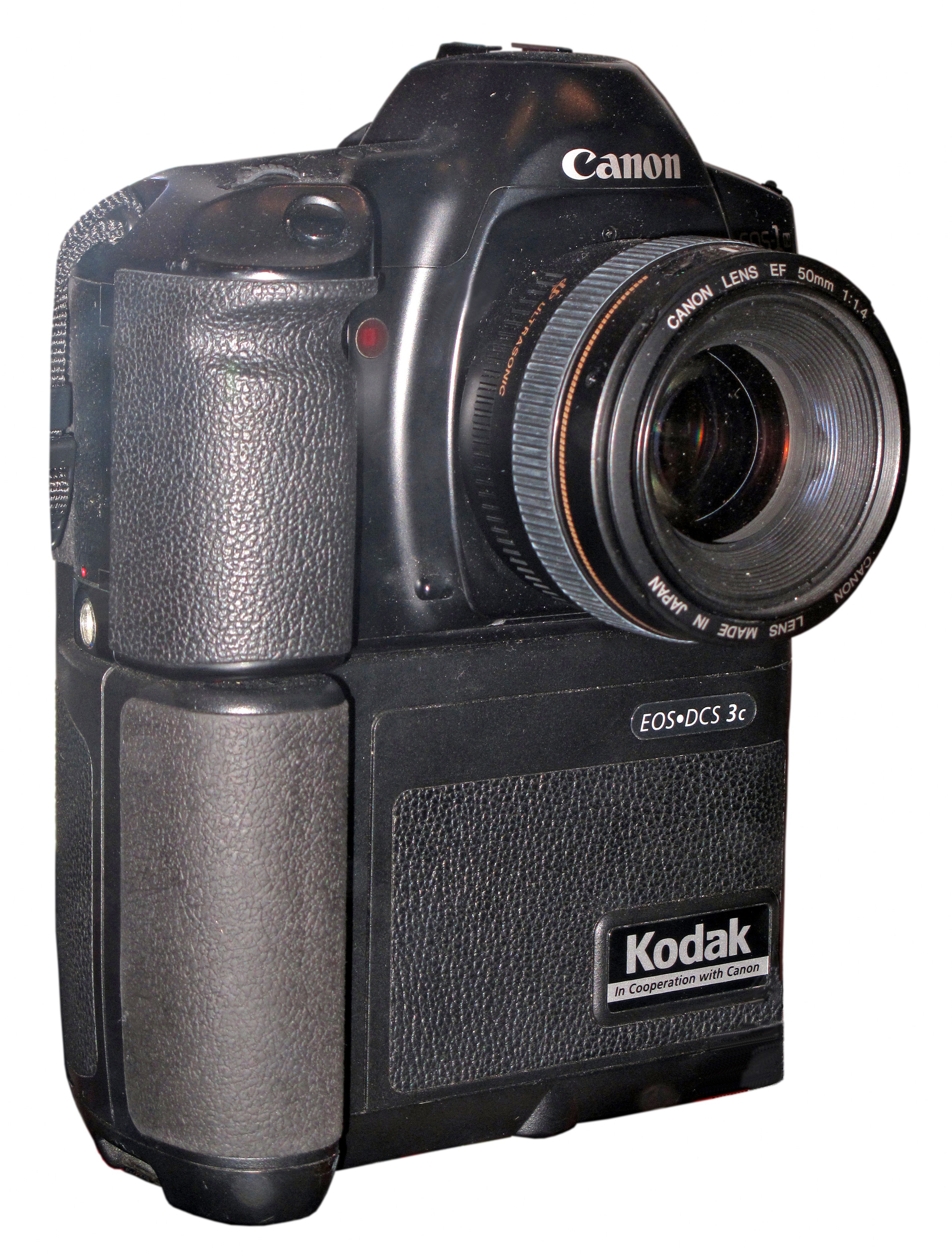Let me start by saying that I'm a Nikon shooter.
But that doesn't mean that I don't admire and respect what Canon has accomplished over the years.
In fact, I might argue that their EOS line of cameras is one of the most significant - if not the most significant in the history of photography.
My how far we've come...
The EOS line started in the days of film, made the transition to digital along with the rest of the world, and continues to provide photographers with innovative products to this day.
Let's take a walk down memory lane and have a look at the history of the EOS system, from its beginning in March 1987 right through to 2017.
EOS 650 - Where It All Began
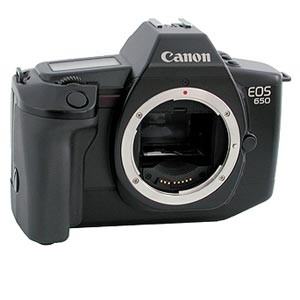
In March 1987, Canon revolutionized the photography world by introducing the EOS 650.
It was a film camera, so there was nothing new there. But it was also the first camera to use the EF (Electro-Focus) lens mount, which not only meant that every EOS camera made since then can use the same lenses, but it also meant that the mechanical connections used by previous cameras were now gone.
In their place was a completely electronic functionality - a gamble, to say the least, back in the analog days of the 1980s.
These new EF lenses had other revolutionary features as well...
For one, they had a huge internal mount size (54mm in diameter), which meant Canon could make lenses with enormous apertures.
Secondly, the EF lenses introduced along with the EOS 650 had an Ultrasonic Motor (USM), which made autofocusing faster, more accurate, and all but silent.
EOS-1 - Setting the Stage for Digital
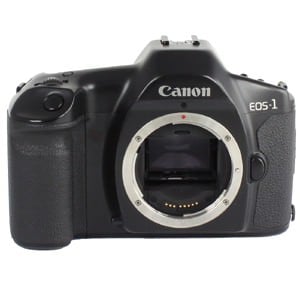
It was only September of 1989 - just 2 1/2 years since the EOS line was first launched.
But already, Canon was thinking ahead and figuring out how to lay the foundation for a move to digital photography.
It would be a number of years before that happened in earnest with the development of the Canon CMOS sensor, but the groundwork was laid with the EOS-1 camera.
The EOS-1 had what Canon called a Cross-Type BASIS (Base-Stored Image Sensor) sensor that gave it the ability to autofocus on a subject with accuracy that to that point had been unachievable. This accuracy was due to the camera's ability to "see" on both the vertical and horizontal planes, giving it much-improved capabilities for tracking all sorts of subjects.
Not to be overshadowed, the EOS-1 debuted with a couple of new lenses, both of which represented Canon's first L-series glass: the EF 50mm f/1.0L USM and the EF 80-200mm f/2.8L USM.
EOS-RT - The Fixed Mirror Arrives
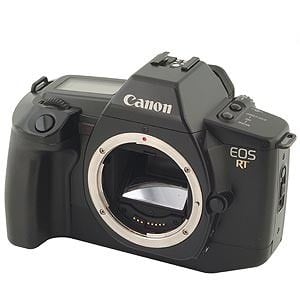
Unlike every other SLR camera made at the time, the EOS-RT, which debuted in October 1989, had a different sort of mirror.
Where traditional SLRs had a mirror that moved within the camera body when a photo was taken, the EOS-RT had a fixed pellicle mirror.
That meant that the mirror stayed put during the exposure, which resulted in a lighting-fast shutter delay of 0.008 seconds.
With such fast performance, it's no wonder that the EOS-RT became a quick favorite of photographers in the wildlife and sports circuits.
EOS 1000 - The BUdget-Friendly SLR

When it launched in October 1990, the EOS 1000 represented one of the best buys a photographer could find with a price of less than $1,000.
With that budget-friendly price tag, Canon jumped squarely into the "prosumer" realm with a camera that had many of the features of its higher-end predecessors.
The EOS 1000 also sported Al Servo and One-Shot AF Modes, making it a favorite of photographers that wanted fast and accurate autofocus.
Because it was targeted toward enthusiast photographers and not just professionals, the EOS 1000 opened photography up to a new generation of hobbyist photographers and ushered in an era in which even beginning photographers could afford a feature-packed SLR camera.
EOS DCS 3 - Digital Arrives
In July 1995, Canon jumped into the future with the introduction of the EOS DCS 3, Canon's first digital EOS camera.
The DCS 3 had a "huge" 1.3-megapixel sensor that nevertheless produced images that were ready to go right out of the camera. It was a game changer for photographers of all ilks, but particularly for photojournalists who could have their images ready for print right then and there.
But that digital technology came with a hefty price tag - nearly $13,000 by today's standards.
It certainly wasn't as big of a seller as the comparatively dirt-cheap EOS 1000, but it represented a major shift in the EOS line and in all of photography for that matter.
EOS 50E - Advanced Light Metering Debuts
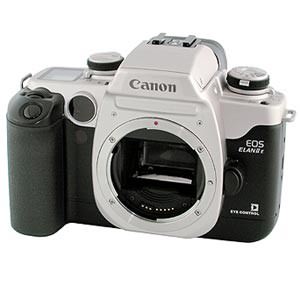
Just two months after Canon unveiled the DCS 3, the EOS 50E/Elan IIE came out.EOS 50E/Elan IIE came out.
The 50E's claim to fame was a new E-TTL (Evaluative Through-the-Lens) light metering system that replaced Canon's A TTL meter.
E-TTL used the same evaluative metering sensor for measuring ambient light. However, because it metered through the lens, it had much better performance and accuracy. In fact, the E-TTL system was much less likely to be fooled by reflected light.
The solid performance of the E-TTL system laid the foundation for future light metering systems for Canon's EOS cameras.
EOS 3 - Autofocus Performance Gets a Boost
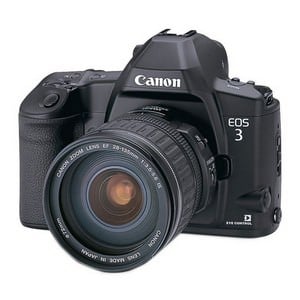
In November 1998, Canon released the EOS-3, a camera whose claim to face was a 45-point autofocus system.
Those 45 AF points were clustered into a circular area that covered nearly a quarter of the viewfinder. That meant photographers could enjoy a completely new level of accurate focus and speed of acquiring a subject.
EOS 300 - The Beginner's EOS Camera
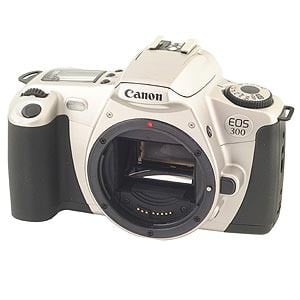
In April 1999, Canon released the EOS 300 as a camera for the everyday photographer.
Like the EOS 1000, the EOS 300 was budget-friendly (about $400 by today's standards). But it also had a number of features intended to make taking a quality photo an easier task.
It's best feature was a 7-point autofocus system with Advanced Integrated Multipoint metering that linked the exposure to seven AF points. That resulted in a photo with more precise results than a beginner photographer could have achieved before.
It was an analog camera, but the price point helped introduce the EOS line to a whole new generation of photography buffs and made the EOS 300 one of the top selling analog cameras of the EOS line.
EOS D30 - The CMOS Sensor Debuts
 By Valtteri Vuorikoski - Own work, CC BY-SA 3.0, https://commons.wikimedia.org/w/index.php?curid=2680090
By Valtteri Vuorikoski - Own work, CC BY-SA 3.0, https://commons.wikimedia.org/w/index.php?curid=2680090
Today, CMOS sensors are a ubiquitous part of the Canon ecosystem. But it got its debut in October 2000 in the EOS D30.
The 3.11-megapixel CMOS sensor was the first use of CMOS technology for imaging (it had previously been used for metering and autofocus sensors).
Additionally, the EOS D30 represented the first digital EOS camera in which all of its major components were built by Canon.
When it came out, the D30 impressed with excellent dynamic range, low noise, and excellent battery life. As well, the CMOS sensor would go on to become the basis for all future EOS cameras, including those manufactured today.
EOS-1D - The 1 Series is Born
Today, Canon's EOS 1 Series represents the cream of the crop for DSLRs.
It got its start in December 2001 with the EOS-1D, a camera that had a 4-megapixel sensor and a 55-millisecond shutter release lag time.
Not only did it produce the best images to date, but the 1D could also handle 8fps shooting, which made it a prime choice for sports photographers.
Canon has lost some ground in the sports photography market in recent years, but you'll still see plenty of 1-series Canons on the sidelines of today's sporting events.
EOS-1Ds - A Full Frame EOS Camera
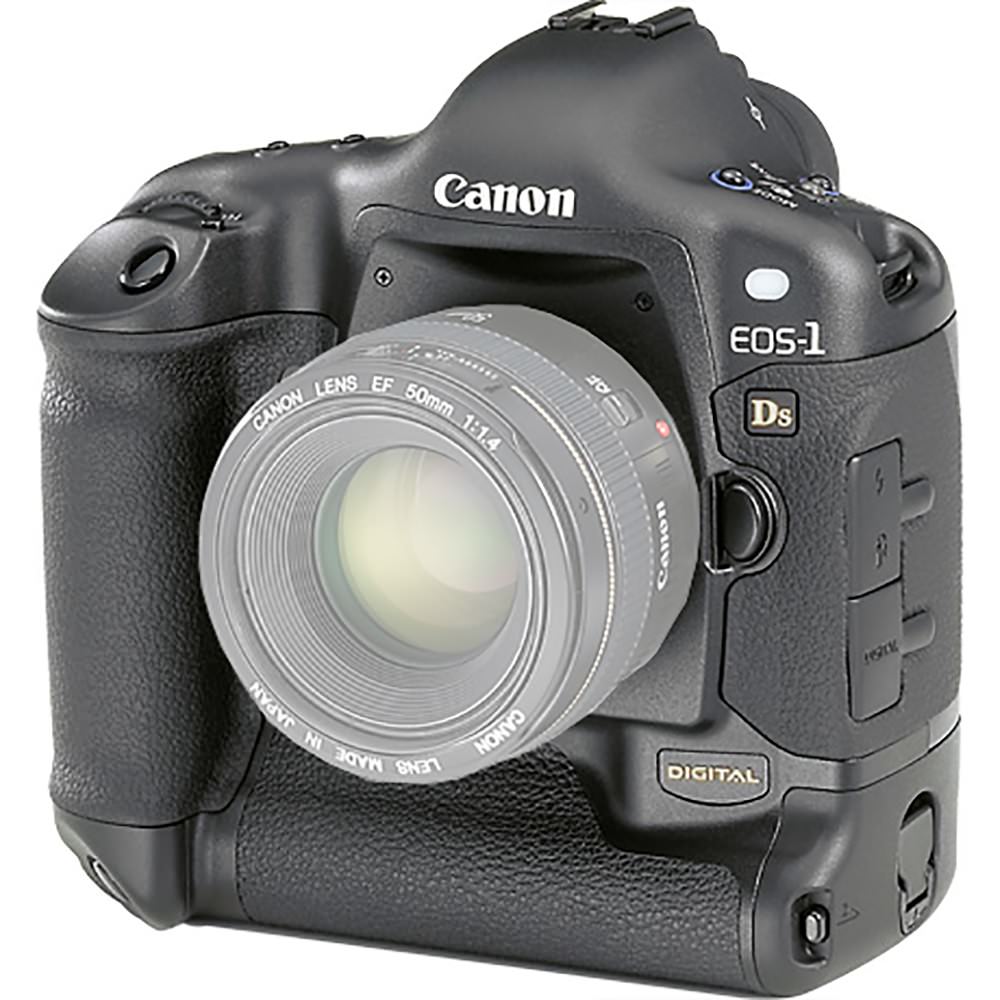
A lot of photographers today would likely consider the EOS-1Ds the first modern DSLR.
Debuting in November 2002, the 1Ds had an 11.1-megapixel CMOS full frame sensor, giving it more sensitivity and dynamic range than any EOS camera before it.
Additionally, the 1Ds had the best noise performance to date, allowing photographers to shoot in low light conditions without digital noise.
There was also something familiar about the 1Ds for film photographers, given that its full frame sensor was the same size as a 35mm frame of film. That comfort level allowed some holdovers from the film days to make an easier transition into the digital world.
EOS 10D - DIGIC Processing Revealed
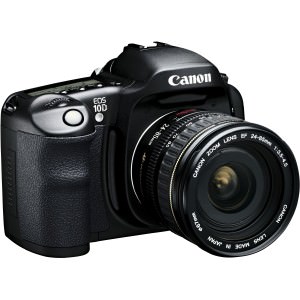
When the EOS 10D came out in March 2003, it was the first EOS camera to use Canon's DIGIC image processing.
Today, DIGIC processing is right up there with CMOS sensors in terms of being hallmark features of Canon cameras.
The beauty of DIGIC processing is that it made the EOS 10D a fast camera with little buffer time that gave photographers an expanded range of shooting speed.
What's more, DIGIC processing allowed photographers to simultaneously take JPEG and RAW files, making it the first EOS camera to give photographers that degree of flexibility and post-processing options.
EOS 300D - A Consumer Level DSLR
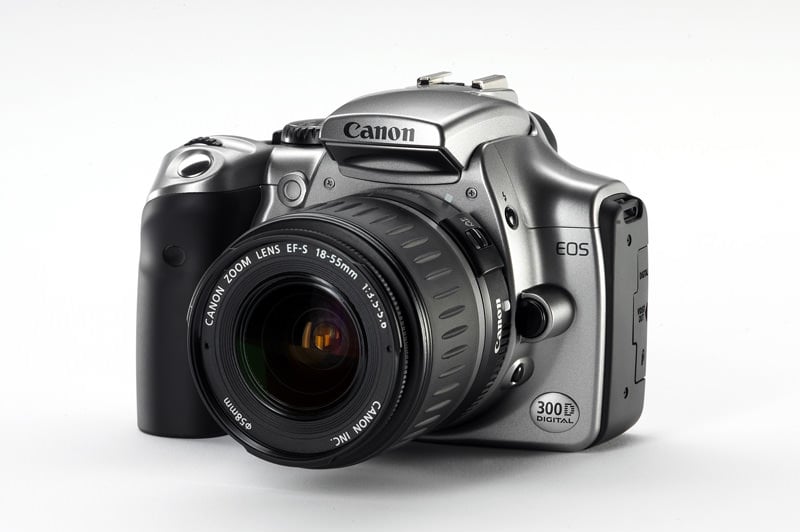
Once September 2003 rolled around, Canon released the EOS 300D to wide acclaim.
At less than $1,000, the EOS 300D was another budget-friendly camera, this time offering a 6.3-megapixel sensor and a new lens mount in the EF-S system, where S referred to "short-back focus."
With the new smaller, lighter, and less expensive EF-S lenses, the 300D was the first truly consumer-level DSLR. Not only was the camera less expensive, but it also had a growing line of EF-S lenses so budget-conscious photographers could develop a kit much more easily. Of course, the 300D was compatible with the already huge line of EF lenses too.
EOS-1D Mark II - The 1D, Upgraded
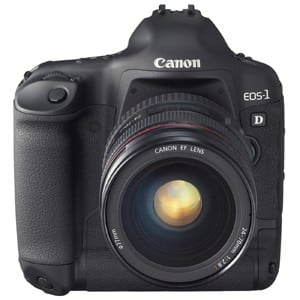
When the EOS-1D Mark II came out in April 2004, it represented a huge step forward even over its predecessor, the 1D.
With continuous shooting of 8.5fps, the camera had lightning-fast speed that would still be considered good in 2017.
What's more, the 1D Mark II sported an upgraded DIGIC II processor, giving the camera much greater ability to handle the data collected by its 8.2-megapixel sensor.
Another new feature to the 1D Mark II was the E-TTL flash metering system, which added lens distance information to its algorithms. That meant it could better determine the level of flash output.
The metering system was also no longer linked just to the autofocus system, meaning it could compare the pre-flash and ambient light levels to get a more precise location on the subject. That also introduced the ability to lock focus on the subject and recompose the shot without causing the metering system all sorts of confusion.
EOS-1Ds Mark II - A New Level of Image Quality
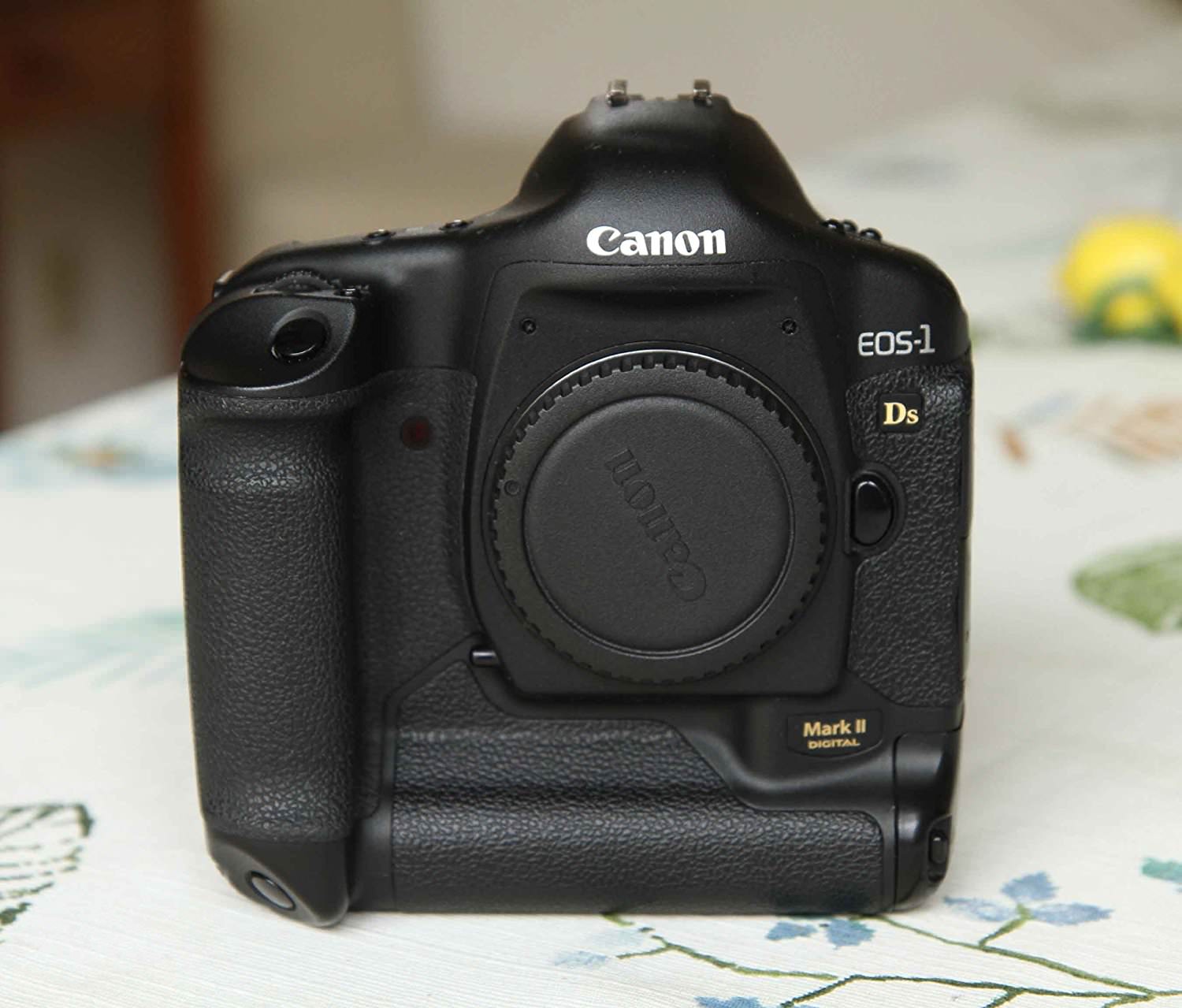
In November 2004, the EOS-1Ds Mark II set a new level of image quality for the EOS line with a whopping 16.7-megapixel full frame CMOS sensor.
That sensor could produce files that converted to 24-bit TIFF files, which was the standard that most photo agencies required.
With continuous shooting at 4fps, it wasn't the fastest EOS camera, but it could sustain that speed for up to 32 frames. The camera's DIGIC II processor made that possible.
The quality of the images produced with this camera is worth mentioning. Not only was the sensor huge for the day, but it was argued by many photographers at the time that its images were of higher quality than 35mm film. Because of that, the EOS-1D Mark II is often considered the camera that redefined the level of performance that a digital camera could achieve.
EOS 350D - Expanded Capabilities for a Consumer Camera
Canon had long seen the value in offering high-quality cameras to beginner and hobbyist photographers. The EOS 350Drepresented a continuation of that thinking.
For the first time, a consumer-level camera had an 8-megapixel sensor, DIGIC II processing, and E-TTL II flash exposure capabilities.
What's more, the 350D was compatible with five dozen EF-S and EF lenses, giving everyday people the chance to have a fully-functioning, professional-level camera at their fingertips.
But all those features weren't the only calling card of the 350D - it was also priced aggressively. With so many features and a good price, the 350D became one of the fastest-selling DSLRs to date.
EOS 5D - A Smaller Full Frame Body
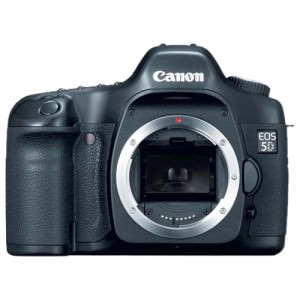
When Canon introduced the full frame CMOS sensor in a smaller body in October 2005, a new type of camera was born.
Dubbed the EOS 5D, the camera had a 12.8-megapixel sensor that provided photographers with excellent full frame images without all the bulk of a traditional full frame body.
In fact, the 5D weighed in at just 810 grams, making it an ideal choice for photographers on the go, like those in the travel and photojournalism sectors. Its successors have proven to be just as valuable, making the 5D line among the very best.
EOS-1D Mark III - 20 Years of EOS Cameras
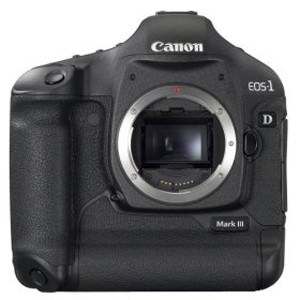
In February 2007, Canon released the EOS-1D Mark III as a way to celebrate two decades of the EOS line.
This camera put everything Canon had learned into one body, with a 10.1-megapixel CMOS sensor and an astonishing 10fps shooting capability.
Canon wanted the 1D Mark III to be the fastest DSLR available, and they achieved that mark easily.
The camera also offered excellent shutter speeds, from 30 seconds to 1/8000th seconds. Canon's new self-cleaning system and live view technology rounded out some of its best features.
EOS-1Ds Mark III - Dual DIGIC Processing
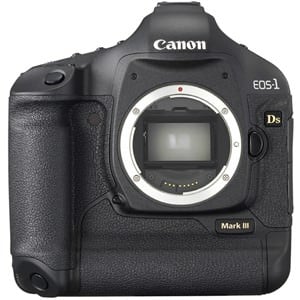
In August 2007, Canon kept the innovation going when they introduced the EOS-1Ds Mark III.
Like its predecessor, it was developed with professional photographers in mind. As a result, the 1Ds Mark III came with a 21.1-megapixel CMOS sensor, a three-inch LCD display with Live View capabilities, and two DIGIC III processors that gave it the capability of capturing images at 5fps.
The 1Ds Mark III also carried over from the 1D Mark III, including the 63-point exposure metering system, a 19-point autofocus system, and a shutter speed range of 30 seconds to 1/8000th seconds.
EOS Rebel T1i - The Rebel Series Begins
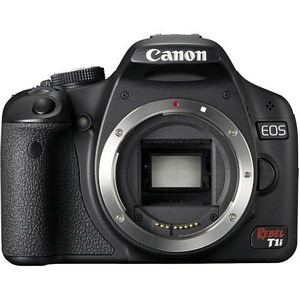
In May 2009, Canon changed the DSLR market yet again with the introduction of the Rebel T1i.
This new entry-level camera gave beginner photographers many new features that made better photos possible.
This included a 15.1-megapixel sensor that was far and away more resolution than ever offered at this price point before. What's more, it had a native ISO range up to 3200, making it a good low-light performer as well, although by today's standards there was a high degree of noise.
The T1i was also capable of recording HD video - one of the first DSLRs to do so.
EOS 7D - A Top-End Crop Sensor
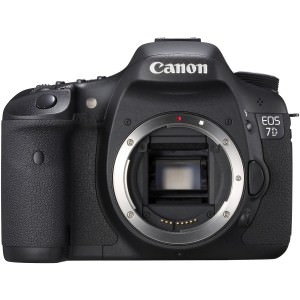
In September 2009, Canon unveiled the EOS 7D, a high-end crop-sensor camera with an 18-megapixel CMOS sensor.
With 8fps shooting, the camera offered fast performance for photographers that work with fast-moving subjects. Like the T1i before it, it also had full-HD video recording capabilities.
The 7D featured a viewfinder with 100% coverage and 1.0X magnification and a 19-point AF system as well.
These features made the 7D a venerable part of the EOS lineup, as evidenced by its five-year-long lifecycle before being replaced by the 7D Mark II in 2014.
EOS Rebel T3 - Another Consumer-Level Gem

By 2011, the consumer-level DSLR market was hotter than ever, and Canon tapped into that with its newest in the Rebel line, the T3.
With a 12-megapixel sensor and 3fps shooting, the T3 certainly didn't blow anyone away with its features.
However, as an entry-level camera, the T3 gave beginner photographers plenty of punch to pursue more advanced photography.
The biggest draw of the T3 was certainly the price - about $600 with a kit lens.
Though it's not known for having lots of bells and whistles or producing the best images, it certainly has its place among the cameras that helped beginners find a way into the DSLR market.
EOS 1D X - Canon's New Flagship
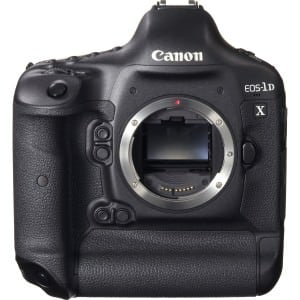
In March 2012, the EOS 1D X became Canon's new flagship professional DSLR, replacing the older EOS-1DS Mark III and the EOS-1D Mark IV.
The 1D X came with a 61-point autofocus system with face detection that also rotated as you changed the orientation of the camera.
It also had an expanded ISO range to 51200, giving photographers a much greater ability to shoot in low-light situations. The camera integrated HD video capabilities, including manual audio controls as well, making it a solid choice for videographers and photographers alike.
Best of all, the 1D X achieved one of the best camera sensor ratings for a Canon camera by DxO Labs - a score of 82 out of 100.
EOS 5D Mark III - Full Frame Glory
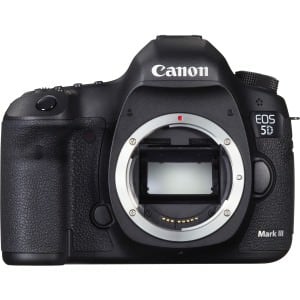
To celebrate the 25th anniversary of the EOS line, Canon released the 5D Mark III.
And celebrate in style is what Canon did.
The 5D Mark III was intended to be a supercharged camera, with features that knocked the socks off of the market.
That included a 22.3-megapixel full frame CMOS sensor, a DIGIC 5+ image processor, and expanded ISO range to 25600.
What's more, the 5D Mark III had a brand new 61-point autofocus system for improved subject tracking. That was made possible by 41 cross-type points and five dual cross-type points, both of which were major upgrades over the 5D Mark II.
In fact, the 5D Mark III was the first EOS camera to get this top-of-the-line autofocus system outside of the 1-series EOS cameras.
EOS M - The First Canon Mirrorless Camera

By 35mm - Own work, CC BY-SA 3.0, https://commons.wikimedia.org/w/index.php?curid=28863868
Canon was admittedly a little late to the mirrorless party, introducing their first one, the EOS M, in 2012.
With a 3-inch touch screen that supports smartphone-like gestures like pinching to zoom, the M came with tons of fancy, connected features.
With an 18-megapixel CMOS sensor and DIGIC 5 processing, it produced good photos, and fast.
Like its DSLR EOS cameras, the M accepted Canon EF-S and EF lenses (with an adapter). M-specific lenses were also released, numbering just four at the time.
EOS 70D - Revolutionary Autofocus
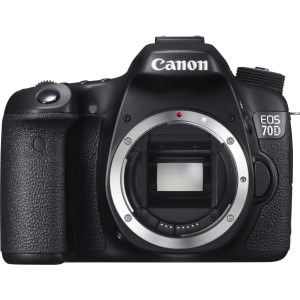
Announced in July 2013, the EOS 70D represented a huge leap forward in the autofocus department, despite the fact that the 70D is a mid-tier APS-C camera.
The hubbub with the 70D's AF system, dubbed the Dual Pixel CMOS Autofocus, is that it had vastly improved focusing speed not just for still photos, but for video too, and while using live view. This was especially the case when shooting at a large aperture.
Beyond that, the 70D offered 7fps shooting, an articulated 3-inch LCD with touch screen capabilities, and HD video capabilities at 1080p.
Add in Wi-Fi, weather-sealing, and a price tag under $1,200, and Canon had a winner on its hands with the 70D.
EOS 7D Mark II - A Long Awaited Update
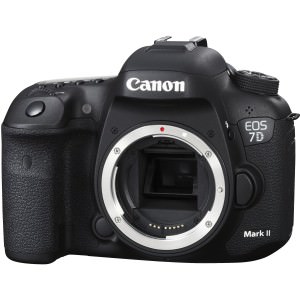
After a five year wait, 7D shooters finally got the update they were looking for in the EOS 7D Mark II.
After all that time, the 7D series needed a boost, and it certainly got it.
The 7D Mark II bumped up the sensor resolution to 20-megapixels and the shutter life to 200,000 shots. The burst rate was increased as well, from 8fps in the 7D to 10fps in the 7D Mark II.
Perhaps the biggest change was in the autofocus system.
The 7D Mark II has 65 autofocus points, all of which are cross-type. The center point is double-cross-type and can focus with lenses as slow as f/8 and down to -3 EV. That makes the 7D Mark II a beast of a camera when needing to shoot in low-light situations.
EOS 5DS & EOS 5DSR - Crazy Resolution
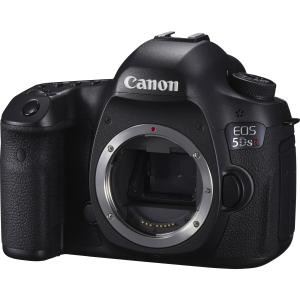
The EOS 5DS and 5DSR were announced in 2015 to much fanfare because they represented the highest resolution sensors to date.
At an astounding 50.6-megapixels, these cameras have unparalleled image quality. And that quality is paired with exceptional speed too, as they sport Dual DIGIC 6 processors with 14-bit processing.
The 5DS and 5DSR have excellent autofocus and metering abilities as well. That's thanks to a 61-point AF system with 41 cross-type points and a new EOS Scene Detection System that has a 150,000-pixel RGB + IR metering sensor.
In short, if you want photos that are clear, sharp, and have finely tuned exposure levels, these cameras are a good choice.
EOS 80D - New Features to Aid in Better Photos
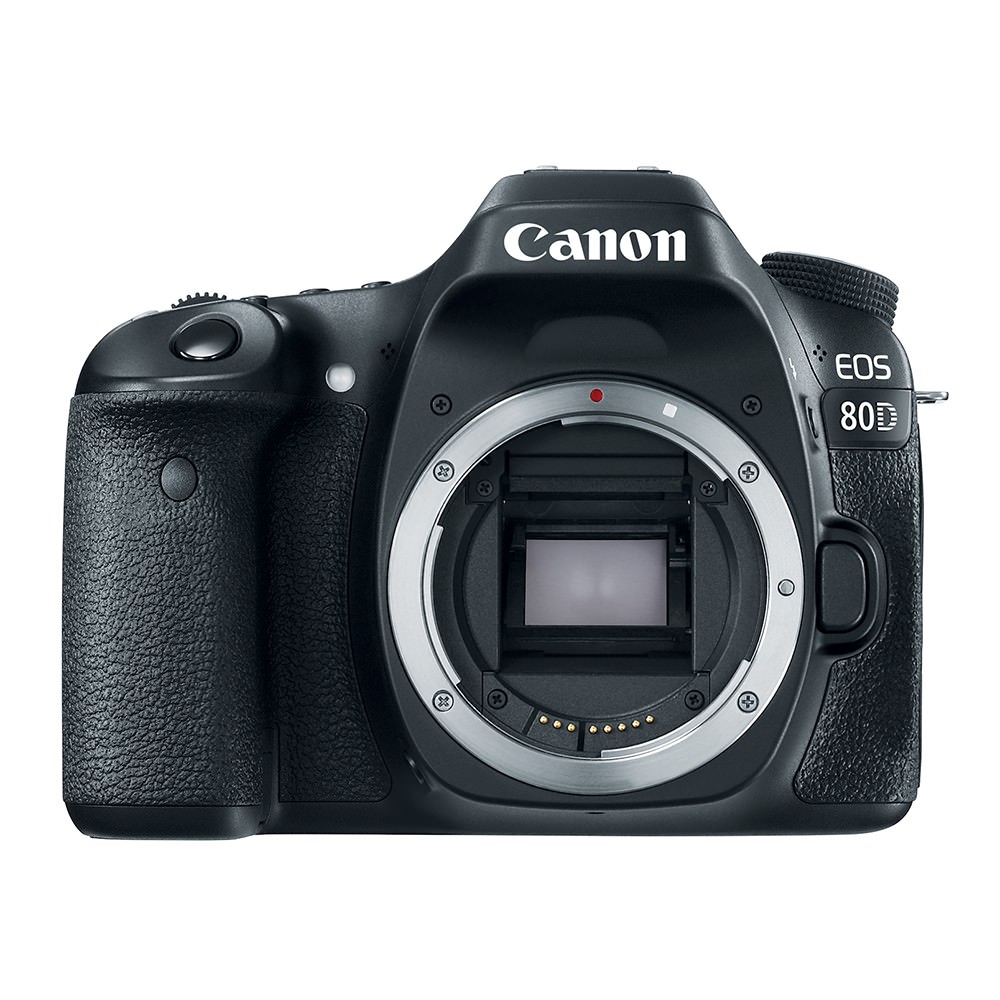
The EOS 80D wasn't a groundbreaking camera, per se, but it included a variety of upgrades over its predecessor, the 70D, that make it a vast improvement.
Not only did the 80D get a better sensor - a dual-pixel 24.2-megapixel CMOS - but it also got an upgraded autofocus system with 45 cross-type AF points, a full 29 more than the 70D.
Additionally, the 80D benefitted from the inclusion of the DIGIC 6 processor for lightning-fast speed, and a new 7560-pixel RGB + IR metering sensor for improved autofocus performance.
Add to that a new shutter mechanism that reduced vibrations and camera shake, and you've got a recipe for a user-friendly camera that takes better photos than models that came before it.
EOS-1DX Mark II - The Flagship Redefined

By Harrison Jones - Own work, CC BY-SA 4.0, https://commons.wikimedia.org/w/index.php?curid=50920089
Released at virtually the same time as the 80D, the EOS-1DX Mark II improved upon the original 1DX in a variety of ways.
To begin, it featured full HD video capabilities, including DCI 4K recording at up to 60fps.
With a continuous shooting rate of 14fps, it offered a new realm of lighting-fast performance. Paired with an autofocus system in which all AF points work to a maximum aperture of f/8, and you have a camera that performs well in all sorts of situations.
Beyond that, the 1DX Mark II has an extended ISO range to a whopping 409600, making it a prime target for low-light shooters.
With a touch screen-enabled LCD, anti-flicker features, built-in GPS, and Wi-Fi, this is truly a modern, 21st-century camera.
EOS Rebel T7i - The First Rebel With Dual-Pixel Live View AF
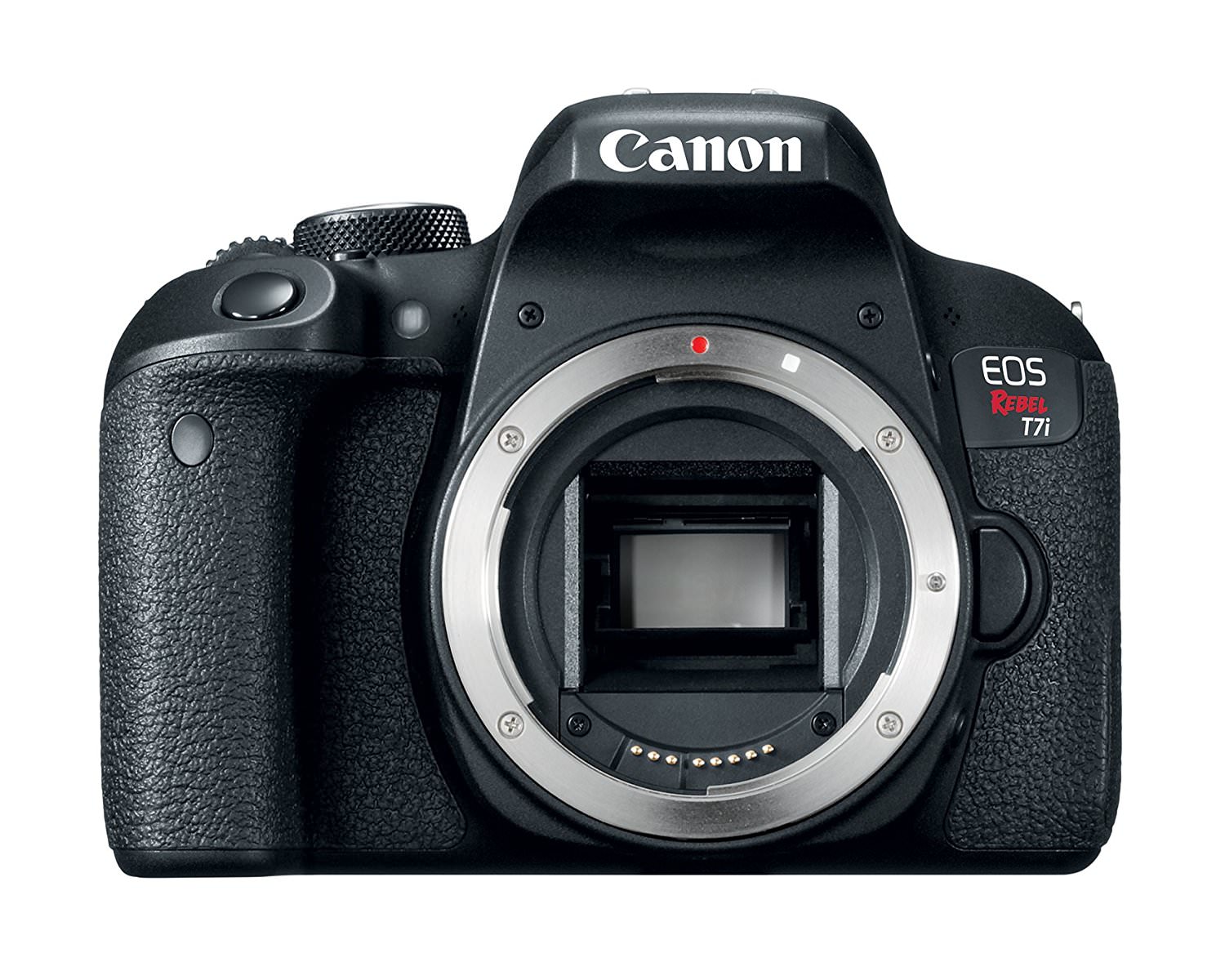
With a release date that's still a couple of weeks away as of writing, the EOS T7i is the newest addition to the EOS lineup and represents what the EOS lineup has been all about the last 30 years.
It's got the innovative Dual-Pixel CMOS Autofocus system, the first Rebel to do so. Paired with 45 cross-type AF points and the newest iteration of the DIGIC processor - the DIGIC 7 - this camera is sure to be both accurate and fast.
For an APS-C camera, it's got tons of other features to be excited about, including 6fps shooting, a standard ISO to 25600, and 1080p video recording. It's even got built-in HDR and time-lapse recording capabilities.
There's also Bluetooth and built-in NFC that makes this a modern, connected camera. See more of the T7i's features in the video below from Canon USA:
Again, the T7i represents all the best parts of the EOS line of cameras. It's packed with features, user-friendly, and priced well.
Just like its predecessors have done, I imagine the T7i will invite a new generation of photographers to get into DSLR photography and open up a whole new world of photo-taking.
Knowing what they have in store for the T7i, I'd say the future is bright for Canon and the EOS line, and I for one can't wait to see what they come up with next!
This article about "Canon EOS Cameras" was first published on our website here https://www.photographytalk.com/photography-articles/7372-canon-s-eos-line-is-30-years-old-and-still-going-strong
